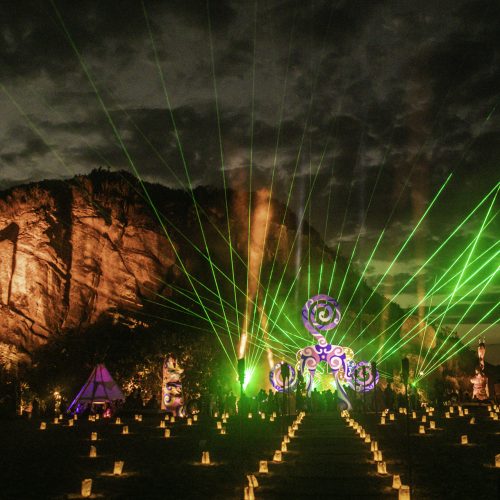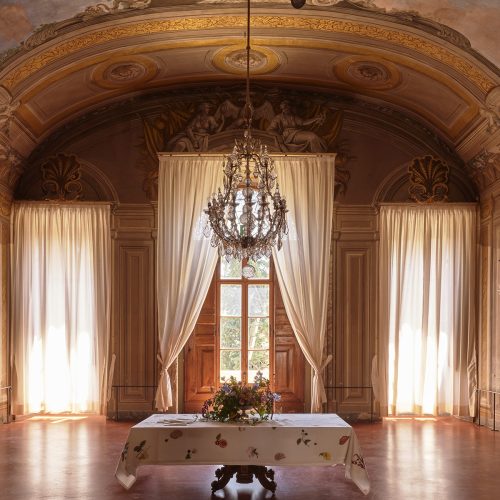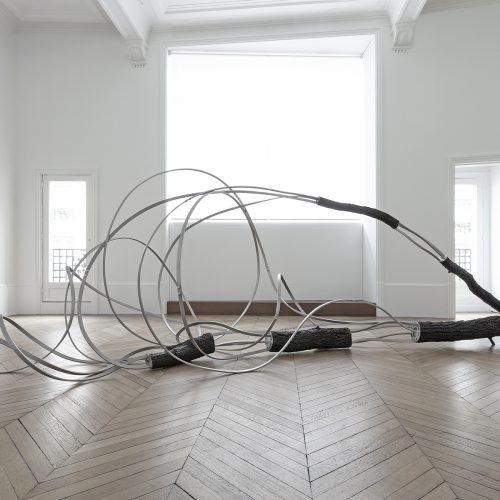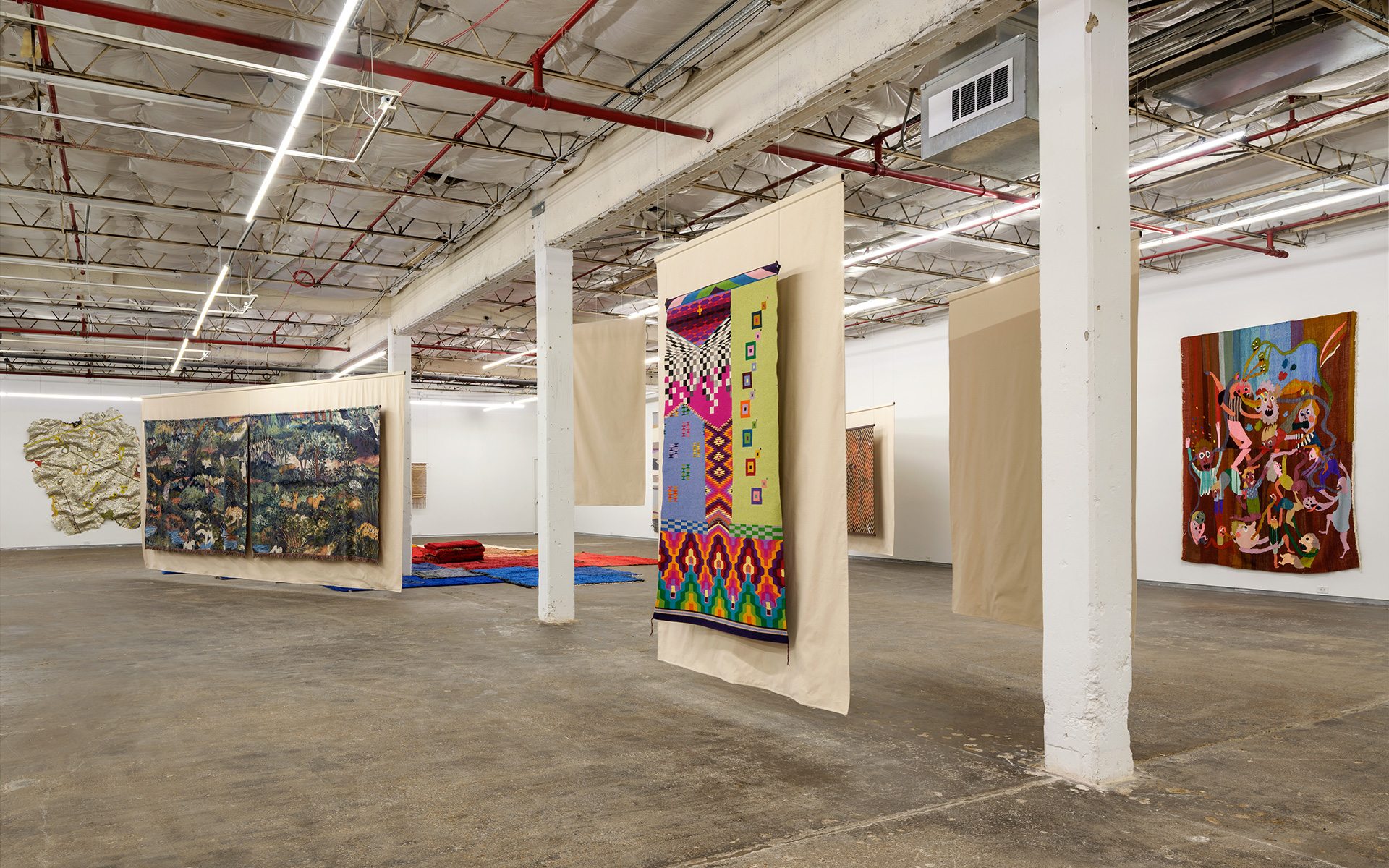

Curator Su Wu Weaves New Perspectives on Textiles in a Group Show at Dallas Contemporary
The show’s vast list of artists ties together a plethora of historical, cultural, and personal approaches to one of the most popular art practices today
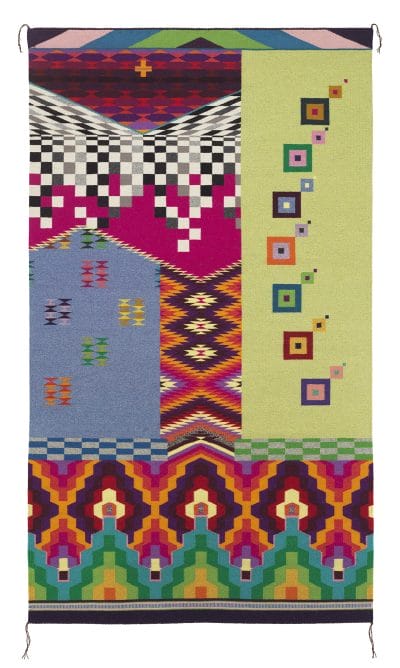
Melissa Cody, Motherboard Vibrations, (2024). Photo: Courtesy of the Artist and Garth Greenan Gallery, New York
The malleable tactility of tapestry was an inspiration for Su Wu to organize Dallas Contemporary’s ongoing group exhibition, “You Stretched Diagonally Across It: Contemporary Tapestry.” The Mexico City–based curator and writer has channeled her fascination for the medium’s “completely revocable” nature into her vision, which brings together an ambitious list of intergenerational contemporary artists. Hailing from various parts of the globe, the artists unite in their commitment to explore the yarn’s emblematic extents, and they include Clarissa Tossin, Melissa Cody, Mika Tajima, Goshka Macuga, Candice Lin, El Anatsui, Analia Saban, Yto Barrada, Diedrick Brackens, and Jovencio de la Paz.
“A painting dries or clay hardens, but a piece of tapestry can totally be undone,” Wu tells Galerie. The Greek mythological figure Penelope, who wove all day and unraveled her weavings at night in anticipation of her husband Odysseus, is a tale she feels compelled by for signaling the metaphoric and materialistic complexity of textiles. The curator calls the experience of looking at a tapestry a “double vision” for completely showing the cotton as still intact. “But you also see an overall composition,” she adds. The show’s 35 works, completed in a variety of mediums, remind viewers that they are still seeing the material unchanged in a tapestry. “Therefore, the perspective shift fully depends on the viewers’ ability to imagine,” she says.
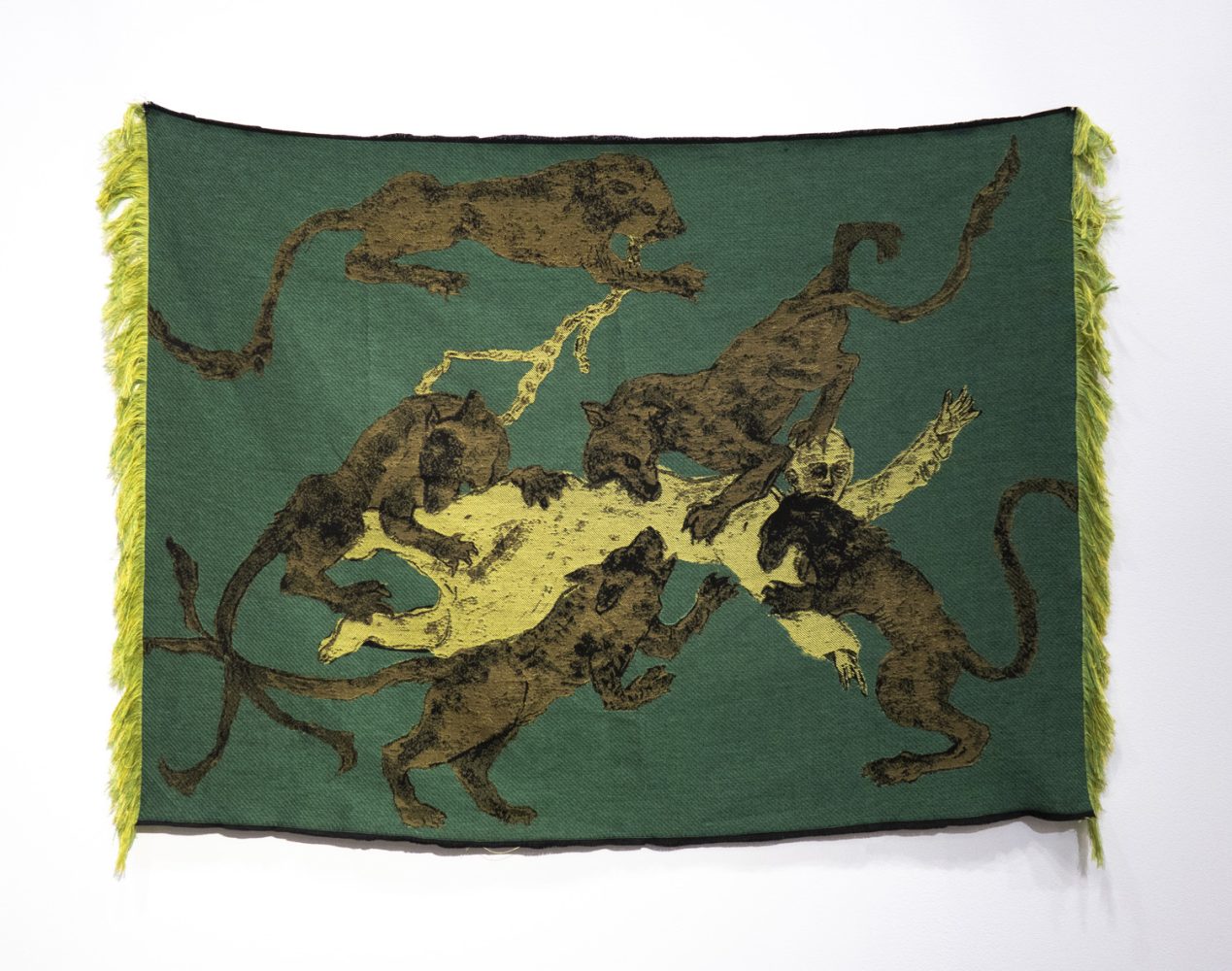
Candice Lin, Papaver somniferum (Tapestry), (2019). Photo: Sang Tae Kim. Courtesy of the Artist, Gwangju Biennale and François Ghebaly, Los Angeles, New York.
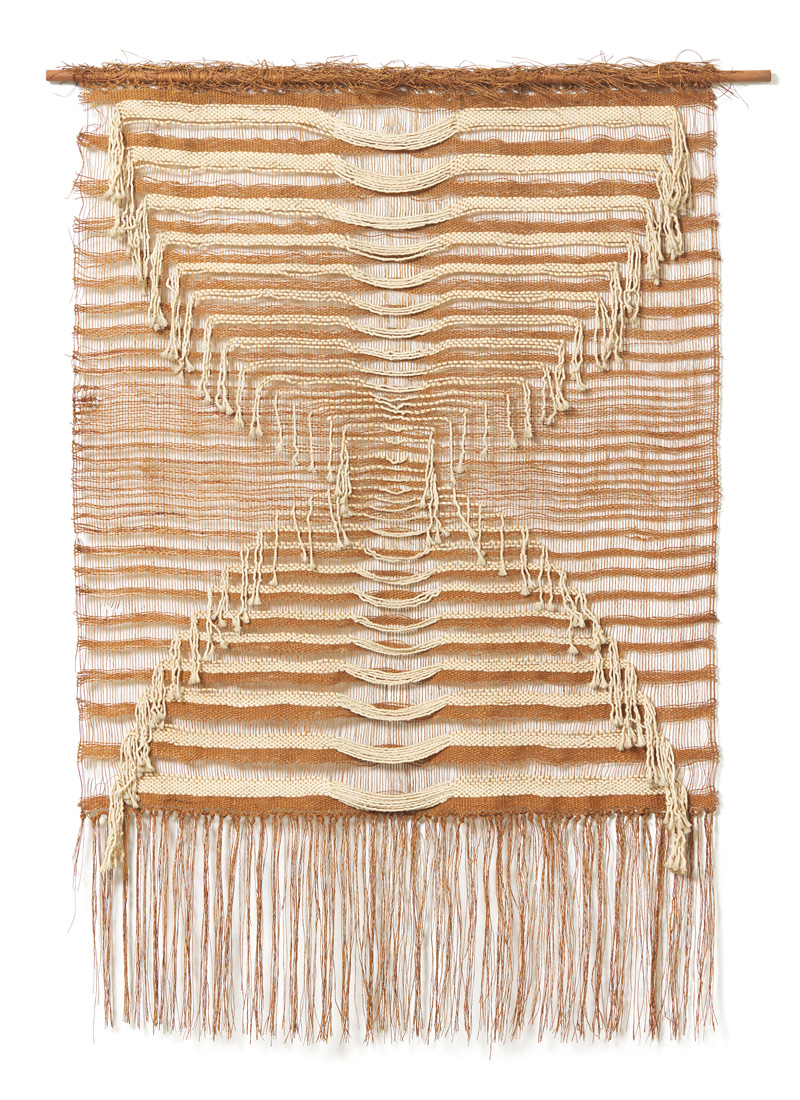
Lee ShinJa, Screen, (1979). Photo: Unreal Studio. Courtesy of the Artist and MMCA Korea
Wu translates her poetic approach to weaving into a deliberate orchestration. Not unlike her curatorial musings, the show’s title is a contemplative one, paying an homage to Franz Kafka’s letters to his estranged father. While Kafka penned the show’s titular sentence in resentment to his father’s absence due to his unending world travels, here, “you stretched diagonally across it,” resonates with an unbound generosity both in materials and imagination practiced by the artists.
Mostly flat and and occasionally sculptural, and even immersive, the works push the definitions of a practice which has been perhaps the most globally and generationally prevalent form of craft. Wu, in fact, tends to twist the notion that tapestry must have close ties to tradition. “We always associate tradition with inheritance, never as something that is made-up,” she says. “Contemporary artists, however, understand that tradition can also be improvisation both out of necessity and original inventiveness.”
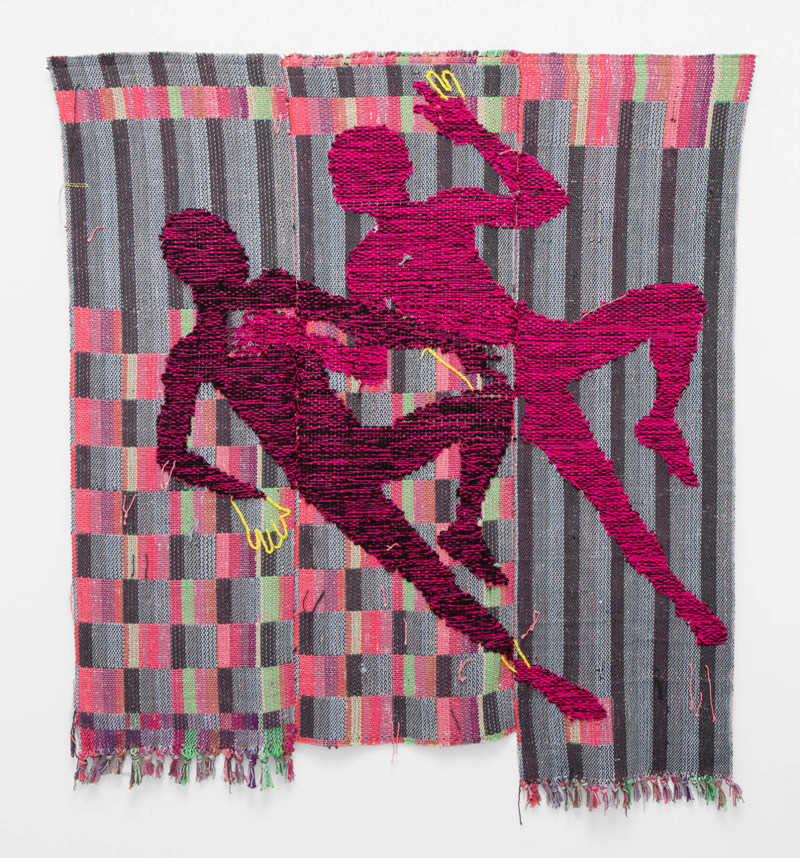
Diedrick Brackens, nuclear lovers, (2020). Photo: Courtesy the artist and Various Small Fires, Los Angeles / Dallas / Seoul The Mohn Family Trust, a promised gift to MAC3
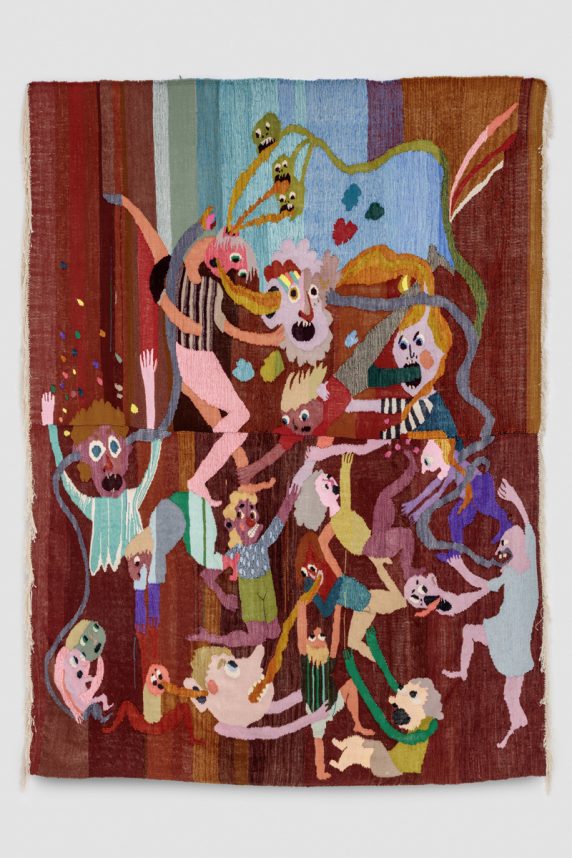
Christina Forrer, Untitled (on brown background), (2018). Photo: Kevin Todora. Collection of Marguerite Steed Hoffman
Barrada, who will represent France in next year’s Venice Biennale, is celebrated for investigating her Moroccan heritage through colonialism’s connection to art and craft. Here, the Brooklyn-based artist exhibits an iteration of her 2015-dated work Geological Time Scale, which is an assembly of woven monochrome Berber rugs which she collected from different Moroccan tribes. The specific selection includes those excluded by the 20th-century French army man Louis Hubert Gonzalve Lyautey in his catalog of Moroccan rugs which became a definitive source for the nation’s prevalent practice. Barrada gathers her culture’s rugs, deemed supposedly uninteresting by a colonialist, while orchestrating an installation of blue and red hues—not unlike a topography of her imagination.
Depth is a key factor also in the works by Macuga and Kira Dominguez Hultgren, having a playfully blurry 3D-like appearance in the former’s weaving of a hallucinatory sea world, titled Who Gave Us a Sponge to Erase the Horizon? (2022). Dominguez Hultgren’s two large-scale sculptural works feature a rich material palette, with fleeces, straps, fabrics, yarns, silk, zip ties, and a basket. Surreal and even otherworldly, the weaver’s oversize creations are positioned between a totemic mystery and everyday ease.
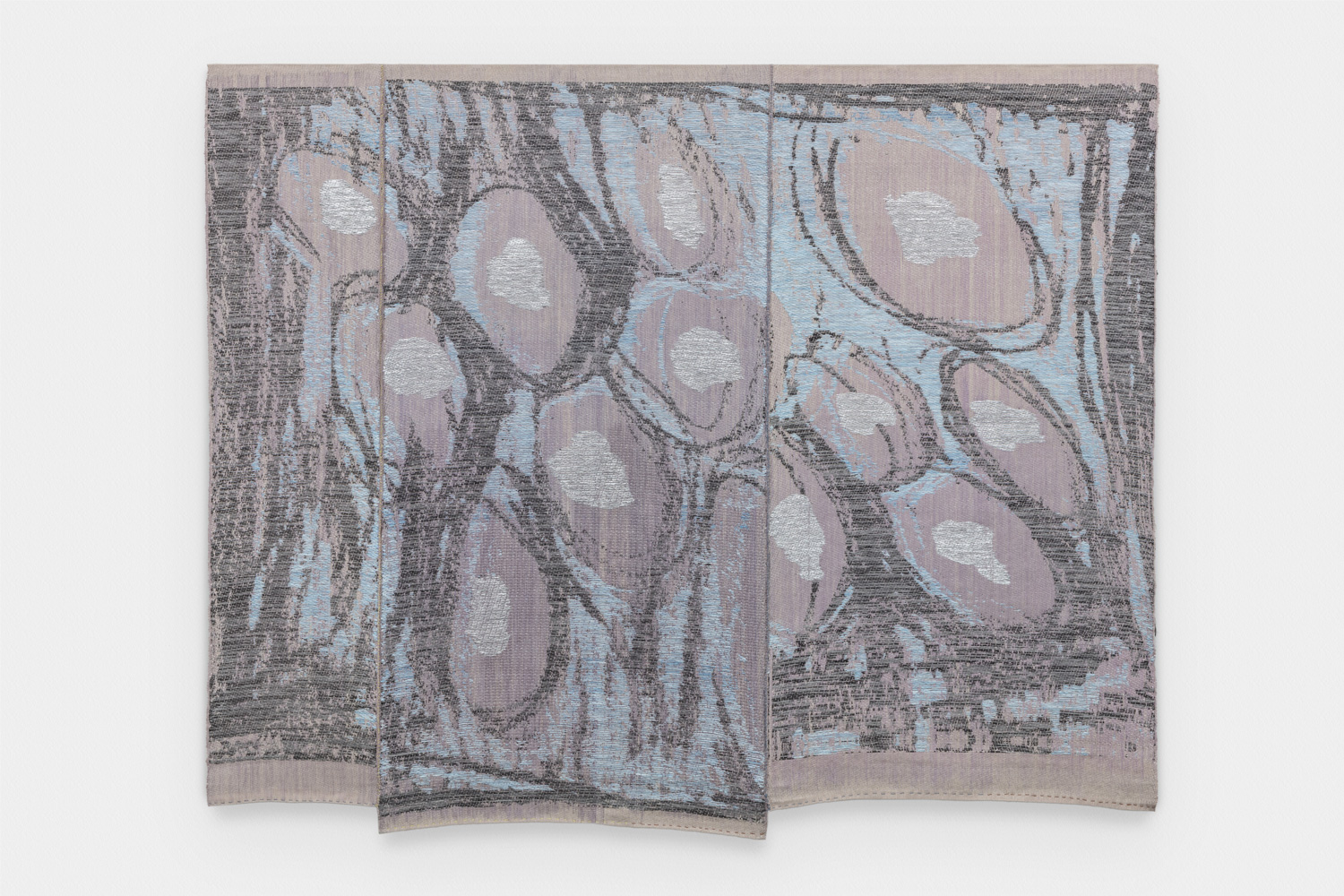
Christy Matson, Purple Haze (2022). Photo: Joshua White Photography. Courtesy of Rebecca Camacho Presents

Goshka Macuga, Who Gave Us a Sponge to Erase the Horizon?, (2022). Photo: Angus Mill. Courtesy of the Artist and Kate MacGarry
Movement, on the other hand, is punctured with each thread in a variety of pieces, such as Christina Forrer’s Untitled (on brown background) (2018), which features wool, silk, and watercolor to embody an erratic Guernica-like potpourri of figures. The artist’s embodiment of turmoil in jubilant colors challenge textile’s often soft and comforting nature. Brackens’s Nuclear lovers (2020) captures two bodies either in free fall or lying in bed. A repeating pattern in the artist and poet’s weaving practice, the corporality is left open-ended with bodies being subject to dance, violence, or love. By leaving his tapestry’s borders unfinished, Brackens also embodies this intention to render his narratives malleable—he leaves the rest to the viewer’s ability to weave their own perspective, just as Wu’s statement suggests.
“You Stretched Diagonally Across It: Contemporary Tapestry” is open through October 12, 2025.

